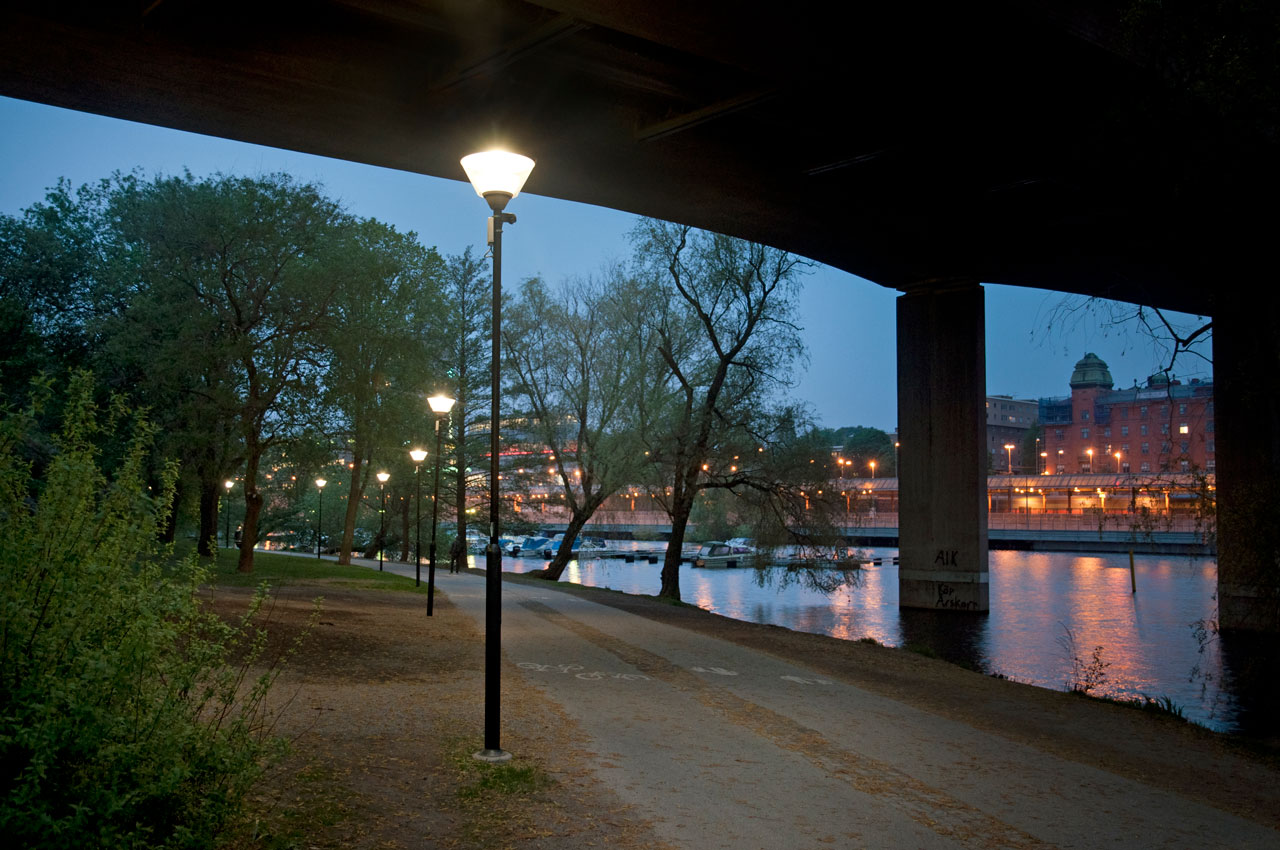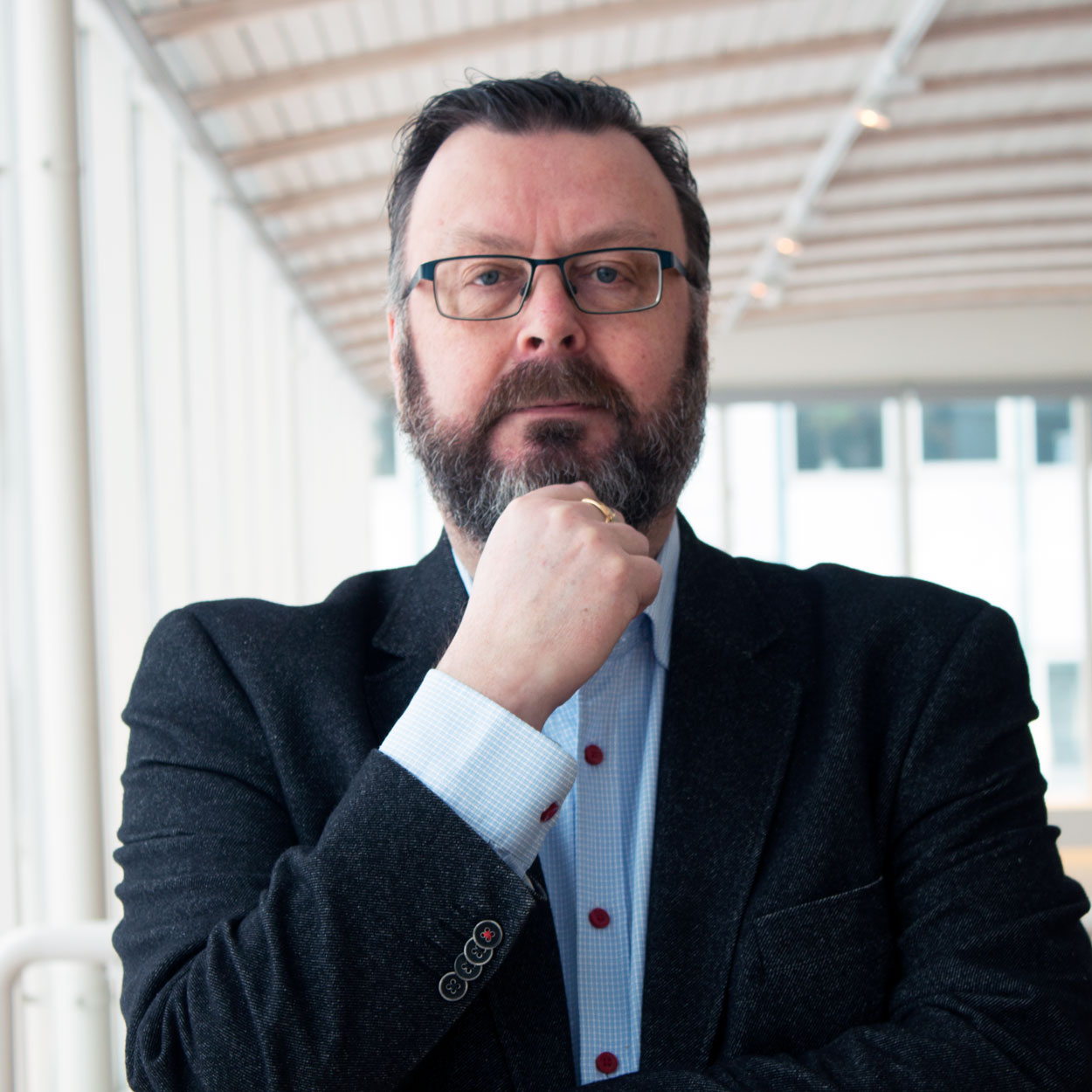Lighting control systems have a great potential to reduce energy consumption in outdoor public areas. But the balance between energy savings and functionality are crucial.
”The easiest and most traditional way is to simply switch the lights off completely when nobody’s around. Though, in urban areas with parks and other public spaces, this is hardly a good idea as people then stop visiting the area after dark. The trick is to design a lighting control system that can optimize lighting levels but with regard to energy savings as well as visual comfort and safety”, explains Mats Wernberg, Technical Product Manager at Fagerhult.

Between 2012–2015, Fagerhult participated in two research studies in collaboration with the City of Stockholm. The intention was to identify the correct parameters for combining maximum energy savings with a positive lighting experience.
The first project involved a pedestrian and bicycle path along the shoreline at Kungsholmen in the centre of Stockholm. The other project concerned a pedestrian path between the two suburban neighbourhoods Bromma and Åkerslund. The first study was conducted by Harita Undurty Surya and Efi Stragali, both active at the lighting laboratory at Kungliga Tekniska Högskolan (KTH). The second study was conducted by professor Jan Ejhed and Per-Henrik Branzell. Both studies were co-financed and coordinated by the public organization SUST (Sustainable Innovation), with Fagerhult and Tritech contributing expertise and solutions.
Initially, old lighting was changed to LEDs, giving immediate energy savings of up to 60%.
”With such a huge impact just by changing luminaires and light sources, you really have to come up with something special to motivate the installation of a lighting control system. So we did”, says Mats Wernberg.
In the first completed project at Kungsholmen, Fagerhult installed a trial system where every fixture was controlled individually by sensors. Every luminaire was connected to each other, communicating via radio. The default setting at night without interaction was set to 50% of the luminaires’ capacity. As pedestrians approached, the system lit up to 100%, following them as they went along. Luminaires were lit up in groups of seven – four in front of the pedestrians and three behind. Once they had passed, lighting levels were dimmed back to 50%. The solution was much appreciated by the users, indicating an energy saving potential of up to 40%.
 ”During the trials in Bromma, the solution was further refined, focusing on finding the exact numbers of luminaires lit up as well as the perfect timing. How far could we go in reducing effect and time without affecting visual performance and people’s experience of safety?” Mats Wernberg, Technical Product Manager at Fagerhult
”During the trials in Bromma, the solution was further refined, focusing on finding the exact numbers of luminaires lit up as well as the perfect timing. How far could we go in reducing effect and time without affecting visual performance and people’s experience of safety?” Mats Wernberg, Technical Product Manager at Fagerhult
Numerous interviews showed that a total of six fixtures were enough, three of them illuminating 60 meters ahead.
”We were a little surprised that the subjects preferred three fixtures ahead instead of four. Actually, they stated that four luminaires were perceived as less pleasant. We also thought that the luminaires would have to remain at high levels for a much longer time after the pedestrian had passed – perhaps as long as ten minutes. But it turned out that one minute was enough!”
”The research has shown us that it really is possible to make significant energy savings with lighting control systems outdoors – and still create a good, pleasant and safely lit environment. With savings of an additional 40% on top of the savings made by changing to LED, we also know that we are prolonging the luminaires’ lifetime when only running on 50%. Exactly how much is impossible to calculate, levels are simply too low”, says Mats Wernberg.
”This kind of solution can have a major impact on sustainability initiatives in urban environments. In Stockholm for example, there are about 50 thousand lighting spots, consuming an estimated 14 million kWh every year…”
